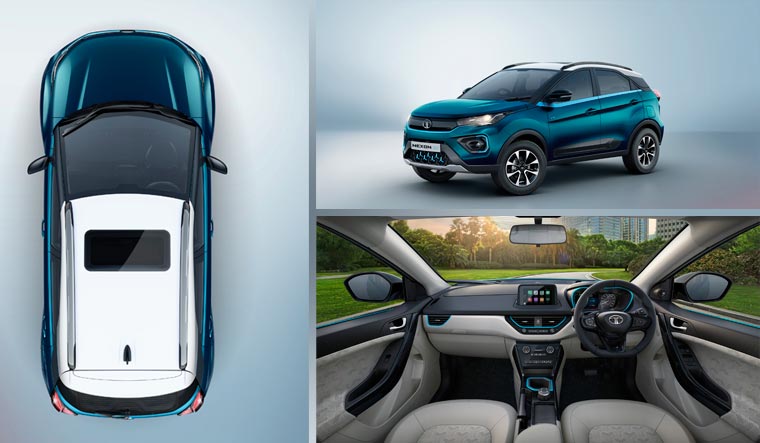Tata Motors on Thursday revealed its premium electric SUV—the Nexon EV, announcing a January 2020 launch. The Nexon EV is powered by a 30.2 kWh Li-ion motor, capable of doing the 0-100kmph sprint in 9.9 seconds and with a range of over 300km.
The Nexon’s battery can be charged to 80 per cent of its full capacity in a single hour with a DC fast-charger and could take up to eight-nine hours to charge fully from a regular outlet.
In a press release, Tata Motors says the vehicle will be priced between Rs 15 to 17 lakhs, with pre-bookings to open from December 20 for an amount of Rs 21,000. Its launch is expected in January 2020.
The Nexon EV comes with multiple ‘smart’ features, including 35 mobile-app based connected features through 'ZCONNECT', such as remote commands, vehicle tracking, driving behavior analytics, navigation and remote diagnostics. In addition,the ZConnect App "enables owners to locate the nearby charging points, TML service stations, set-up speed alerts, track vehicle location and many more features".
The Nexon EV also comes with regenerative braking, hill ascent and descent assist, and a Harmann infotainment system with the option to include Android Auto and Apple Car Play.
The Nexon EV is the first electric Tata to come with the company’s vaunted ‘Ziptron’ drivetrain technology, which it has earlier said “will power a range of aspirational electric cars”. Highlights include an efficient high voltage system, “zippy performance”, a long-range and fast-charging battery that comes with an 8-year-warranty as well as IP67 water and dust resistance for the battery.
How does the Nexon EV compare to the Hyundai Kona Electric?
The Nexon EV makes 129 PS and 245 Nm of torque, putting it a little below the Hyundai Kona electric which packs a 39.2 kWh motor making 136 PS and 395 Nm of torque. The Kona also enjoys a range advantage, with an ARAI-certified range of 452km.
But, with the Kona priced above Rs 23 lakh, the Nexon EV enjoys a price advantage. With the Kona shipping over 300 units so far, the Nexon could target a larger market at its lower price, as young buyers increasingly prefer SUVs.
For years, the electric-car market in India was small—and not just in terms of market size. Early electric cars like the E20 were physically small, meant for short commutes within the city.
Small cars are easier to power. They are cute to look at. But, they gave the impression that electric vehicles could not match up to their fossil-fuelled counterparts in practicality or people-carrying capacity.
ALSO READ
- Govt approves Rs 246 crore worth of PLI claims from Mahindra and Tata Motors; 16 lakh electric vehicles incentivised
- Auto updates: Blinkit launches ambulances, EV makers to meet with government, and Tesla loses out on India market
- Hyundai Creta Electric SUV unveiled: Details to know a price announcement on February 1
As batteries got better, the cars started to get bigger. With the Cybertruck, Tesla showed how an electric vehicle could match up to even the biggest petrol-burners. In EV-tech, 2019 was a year of electric-SUVs unveilings, with many launches scheduled for 2020.
The Hyundai Kona is currently the only electric SUV on sale. 2020 will see the launch of MG EZS, the Tata Nexon EV, the Mahindra XUV300 EV and e-KUV100, the Maruti e-WagonR, and the Ford Aspire EV. The luxury segment will see the Audi e-Tron, Jaguar i-Pace and Volvo XC40 EV launch as well.


